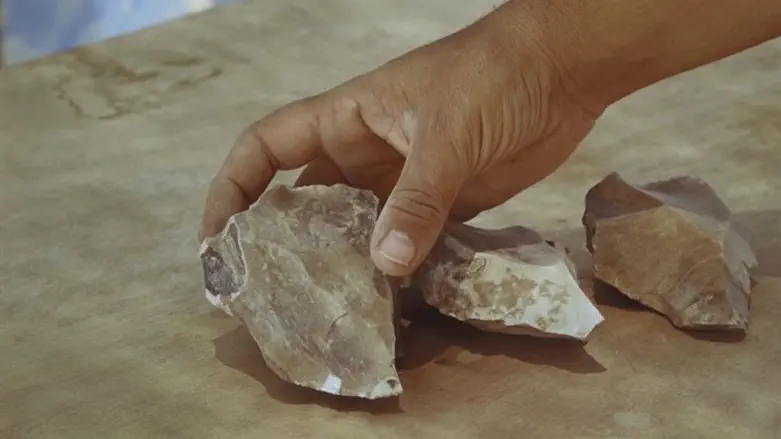
Recent excavations conducted by the Israel Antiquities Authority (IAA) together with local youths from Dimona uncovered a Middle Paleolithic flint knapping site that existed between 250,000 - 50,000 years ago.
Those who helped uncover the unique prehistoric site were youths from the city, who worked in the excavation as a summer job during the economically challenging period of COVID-19.
The excavations were conducted in preparation for the construction of a solar energy field, and funded by the Electric Company.
The newly discovered site near Dimona is small. Prehistoric humans seemingly arrived there in order to access the abundant natural flint, from which they made their tools.
The site is unique because of the flint knapping technology, known as 'Nubian Levallois,' which originated in Africa. Researchers trace the path of this technology in order to understand the migration routes of modern humans from Africa to the rest of the world approximately 100,000 years ago.
According to prehistory researchers Talia Abulafia and Maya Oron from the Israel Antiquities Authority, who directed the excavation, "This is the first evidence of a 'Nubian' flint industry in an archaeological excavation in Israel."
"The knapped flint artifacts remained right in the original place where the humans sat and created the tools. This manufacturing is identified with modern human populations who lived in East Africa 150-100 thousand years ago and migrated from there around the world. In the last decade, quite a few Nubian sites have been discovered in the Arabian Peninsula. This has led many scholars to claim that modern humans left Africa through the Arabian Peninsula. The Dimona site appears to present the northernmost example of Nubian flint output found in situ, thus marking the migration route: from Africa to Saudi Arabia, and from there, perhaps, to the Negev."
The excavation took place while dealing with the challenges presented by COVID-19, which affect the health and finances of Israeli citizens in general, and the residents of Dimona in particular.
According to Svetlana Talis, Northern Negev District Archaeologist at the Israel Antiquities Authority, "Dimona is one of the most severely affected towns in the second wave of the coronavirus outbreak, and was even on the verge of lockdown. After wondering what to do about summer holidays, local youths from Dimona came to the excavation to work and help their families, and to uncover a site of particular importance. All of this is part of a project promoted and directed by the Israel Antiquities Authority in recent years, which seeks to bring our youth closer to their own cultural heritage."



